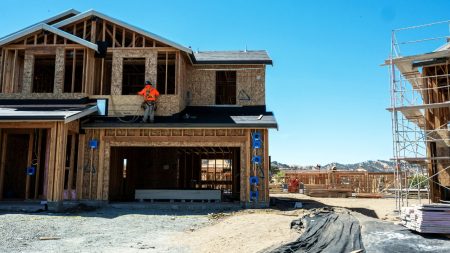There’s no shortage of turmoil around Social Security and retirement security these days. If you listen to Americans—Republicans, Democrats, the rich, the poor, the very online and the very offline—you’ll hear one consistent refrain: financial security in old age ranks at the top of people’s concerns. And they’re right to worry.
That’s why I was especially glad to sit down with Robert “Bob” Powell, Yahoo Finance podcast host, for an episode of his podcast Decoding Retirement. LINK NEEDED HERE
Bob is one of the nation’s most trusted voices on retirement. You’ve probably read him in MarketWatch, TheStreet, or USA Today. He’s been writing about the complexities of retirement for decades and knows the issues inside and out. Our conversation was wide-ranging and candid—so much so that I wanted to share a written version of some of our key questions and answers here, expanded just a bit to cover ground we couldn’t get to in the audio.
Why The “Working Longer” Consensus Doesn’t Work To Solve The Retirement Crisis
Bob kicked off the conversation with a familiar question: Can’t people just work longer? Isn’t that the solution?
Here’s the problem: the idea that most older Americans can or should work longer is not only flawed, it’s harmful. We often hear that longevity is increasing—but that’s mostly true for the well-off. The people who are living longer and healthier lives are typically those in the top income tiers. They’ve had stable jobs, good healthcare, and the kind of careers where they can choose to keep working for meaning and enjoyment. That’s wonderful—for the 11% of people aged 62 to 70 who benefit from it.
But for the majority, especially those without college degrees or stable career paths, life expectancy hasn’t improved. In fact, in many cases it’s declined, especially since the COVID pandemic. Yet we still push the idea that people should just “work longer” as if everyone has a flexible, fulfilling job with great health benefits. Most don’t. Most are navigating erratic schedules, physically demanding work, sleep disruption, and emotional strain. For them, working longer isn’t good for their health. It’s often a fast track to illness, disability, and premature death.
Social Security Boosts Can Help Stave Off The Retirement Crisis
Bob and I also talked about Social Security and the looming threat of a 21% across-the-board cut if Congress doesn’t act by 2033. That’s not a distant risk—it’s just around the corner.
We’re already in a crisis. One-third of older Americans live in poverty or near-poverty. Another third are barely scraping by and could be plunged into crisis by a single financial shock. Only the top third enjoy any sense of true financial security in retirement. A 21% cut to benefits would devastate the middle group and push many into the first category. For millions, especially those living alone or reliant on Social Security as their primary income, a missed check isn’t an inconvenience—it’s a full-blown emergency.
The Schwartz Center for Economic Policy Analysis has published frequently on these issues. See the recent policy note, Retirement Then, Now, and Next and the journal article No Rest for the Weary (Ghilarducci, Siavash Radpour and Jessica Forden, 2024), published in Review of Political Economy, 36(2).
The 401(k) Era Has Failed Most People And Contributes To The Retirement Crisis
Bob and I got into the nitty-gritty of retirement plans next. I argued—and I’ve written this many times—that the do-it-yourself 401(k) system has fundamentally failed.
Here’s why: a strong retirement system needs to do three things. It must accumulate savings, invest them efficiently, and make those savings last a lifetime. The 401(k) fails on all three counts for most people.
First, access. About half of all workers don’t have access to a 401(k) at work. That’s strike one. Second, investment. Defined-benefit (DB) pensions are pooled and professionally managed, so they generate better, safer returns. Most 401(k) plans underperform, and individual investors bear all the risk. That’s strike two. Third, distribution. Figuring out how to make a lump sum last 30 years is one of the hardest problems in personal finance—and it gets harder just as aging makes complex decision-making more difficult. DB pensions solve this with guaranteed monthly income for life. Strike three. And, for good measure, here’s a fourth: security. With a pension, a scam or bad decision might cost you one check. With a 401(k), it could cost you everything.
The American Way Of Funding Retirement Is Broken For Most Workers
When people ask me why we still have this system, I always say: it works just fine for financial services companies and for employers who don’t want to contribute to retirement. It just doesn’t work for workers. And that is who we should be designing retirement policy for.
Social Security Eroding In Plain Sight; Leading Up To The Retirement Crisis
We’re also seeing quiet administrative sabotage of Social Security. Since 2010, we’ve lost around 7,000 staff at the Social Security Administration. That means longer wait times, more errors, and less help for people who need it. Planned office closures will hit rural and older populations especially hard.
Meanwhile, fraud crackdowns tend to focus on minor overpayments and honest mistakes, while wage theft and employer misclassification go unchecked. The result is a system that seems deliberately made to frustrate and discourage people. Public trust erodes—and that’s part of the danger.
Yes, We Can Fix The Retirement Crisis With More Revenue
The good news? The solution to Social Security’s long-term solvency is simple: more revenue. Right now, only wages up to $176,100 are taxed for Social Security. That means a millionaire pays a lower effective tax rate than a schoolteacher. Lifting the payroll cap and taxing investment income a little bit would fix the problem.
Legislation like the Social Security 2100 Act proposes just that. It’s wildly popular with voters. The barrier isn’t public opinion—it’s political will.
A Gray New Deal: Preventing The Retirement Crisis
I’ve proposed what I call a “Gray New Deal”—a comprehensive set of reforms that make work and retirement better for everyone, especially older Americans.
If people must work longer, let’s make sure they can do it in dignity. That means encouraging unionization, expanding public sector employment, and establishing an Older Workers’ Bureau at the Department of Labor. It also means creating training programs for older learners and lowering the Medicare eligibility age to 50 or 60, with Medicare as the primary payer. Let’s stop acting like it’s a personal failure when someone needs support—and start creating systems that reflect people’s realities.
Finally, I shared my vision for Guaranteed Retirement Accounts, or GRAs. It’s simple. If you don’t have a retirement plan at work, you’d be automatically enrolled in a professionally managed, low-fee retirement account—just like federal workers have with the Thrift Savings Plan (TSP).
Unlike the current system, GRAs would include matching contributions or refundable credits for lower- and middle-income workers. Right now, high earners get thousands in tax breaks for saving. Most workers get nothing. GRAs would fix that and close the coverage gap without adding big new costs to the Treasury.
I have written extensively on Guaranteed Retirement Accounts with my co-author Tony James in Rescuing retirement: A plan to guarantee retirement security for all Americans (Ghilarducci & James, 2020).
What Can You Do Now To Stave Off Your Retirement Crisis
Don’t put your head in the sand. Start by being honest about your budget. Most people underestimate expenses and overestimate retirement income. Adjust both by 20%. Identify your retirement gap without shame—the system wasn’t built for you. Then take action. Talk to a fee-only financial advisor. Use AARP tools to explore home equity, job options, and overlooked benefits. And most importantly: vote. Politicians listen to older Americans. Demand real solutions.
We all deserve a retirement with dignity. That’s not too much to ask. It’s the least a just society should provide.
Read the full article here













